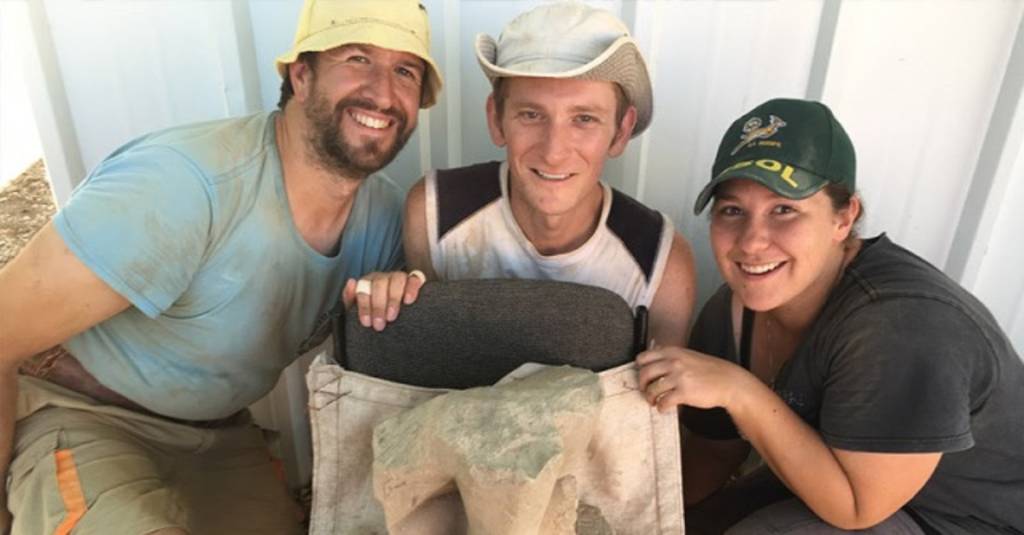In a historic find, Israeli archaeologists unearthed a large fragment of an Egyptian statue made of limestone, discovered during the excavations at Tel-Hazor, north of the Sea of Galilee in Israel.
Only the lower part of the statue survived, depicting the feet of a male figure seated on a square base, on which a few lines in the Egyptian hieroglyphic script are inscribed.
The archaeologists estimate that the complete statue would equal the size of a fully-grown man.
Only a preliminary reading of the inscriptions has been attempted, and the title and name of the Egyptian official who originally owned the statue are not yet entirely clear.
The statue was originally placed either in the official’s tomb or in a temple – most probably a temple of the Egyptian god Ptah. Most of the texts inscribed on the statue’s base include words of praise to the official who may have served and most probably practiced his duties in the region of Memphis, the primary cult center of the god Ptah.
They also include the customary Egyptian funerary formula ensuring eternal supply of offerings for the statue’s owner.
The statue, together with the sphinx fragment of the Egyptian king Mycerinus discovered at the site by the research team three years ago, are the only monumental Egyptian statues found so far in second millennium contexts in the entire Middle East.
Hazor – A Treasure Trove of Archaeology
The discovery of these two statues in the same building currently being excavated by the research team, indicates the special importance of the building, probably the administrative palace of the ruler of the city, as well as that of the entire city of Hazor.
Prof. Amnon Ben-Tor, of the Institute of Archaeology at the Hebrew University of Jerusalem, who has been conducting excavations at Tel-Hazor for over 27 years, said Hazor is the most important site from the Biblical period.
In the course of close to 30 years of excavation, fragments of 18 different Egyptian statues, both royal and private, were discovered at Hazor. Excavations at Hazor began in the mid 1950s.
Most of these statues were found in layers dated to the Late Bronze Age (15th-13th centuries BCE.) – corresponding to the New Kingdom in Egypt. This is the largest number of Egyptian statues found so far in any site in the Land of Israel, although there is no indication that Hazor was one of the Egyptian strongholds in Southern Canaan nor of the presence of an Egyptian official at Hazor during the Late Bronze Age.
Interestingly, most Egyptian statues found at Hazor so far date to Egypt’s “Middle Kingdom” (19th-18th centuries BCE), a time when Hazor did not yet exist. It appears that the statues were sent by an Egyptian king in the “New Kingdom” as official gifts to the king of Hazor, the most important king in Southern Canaan at the time, or as dedications to a local.
Hazor is the largest biblical-era site in Israel, covering some 200 acres, and has been recognized as a World Heritage Site by UNESCO. The population of Hazor in the second millennium BCE is estimated to have been about 20,000, making it the largest and most important city in the entire region. Its size and strategic location on the route connecting Egypt and Babylon made it “the head of all those kingdoms” according to the biblical book of Joshua.
Hazor’s conquest by the Israelites opened the way to the conquest and settlement of the Israelites in Canaan. The city was rebuilt and fortified by King Solomon and prospered in the days of Ahab and Jeroboam II, until its final destruction by the Assyrians in 732 BCE.
Documents discovered at Hazor and at sites in Egypt and Iraq attest that Hazor maintained cultural and trade relations with both Egypt and Babylon. Artistic artifacts, including those imported to Hazor from near and far, have been unearthed at the site. Hazor is currently one of Israel’s national parks.
By: Max Gelber, United with Israel
Do You Love Israel? Make a Donation - Show Your Support!
Donate to vital charities that help protect Israeli citizens and inspire millions around the world to support Israel too!
Now more than ever, Israel needs your help to fight and win the war -- including on the battlefield of public opinion.
Antisemitism, anti-Israel bias and boycotts are out of control. Israel's enemies are inciting terror and violence against innocent Israelis and Jews around the world. Help us fight back!
